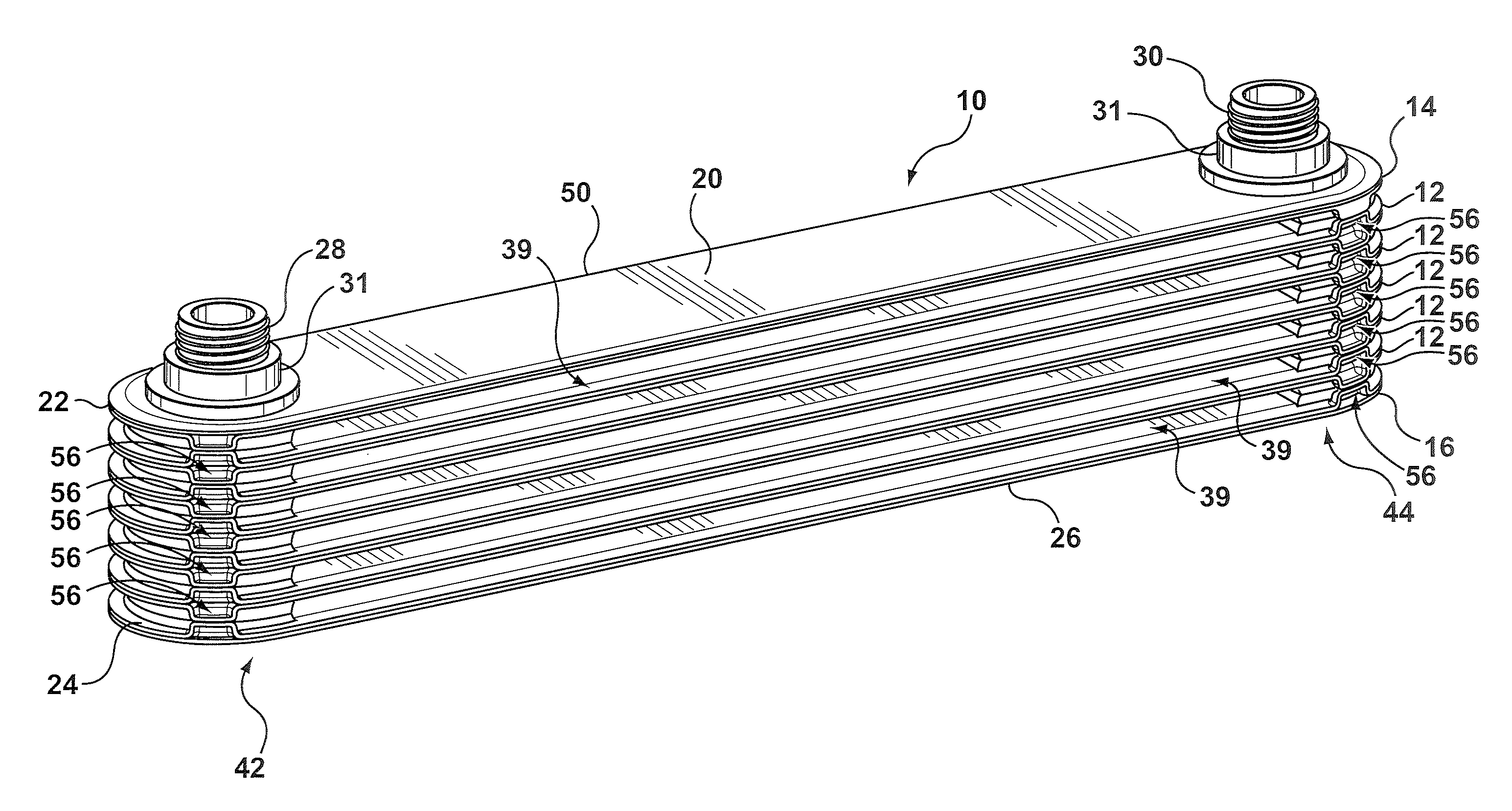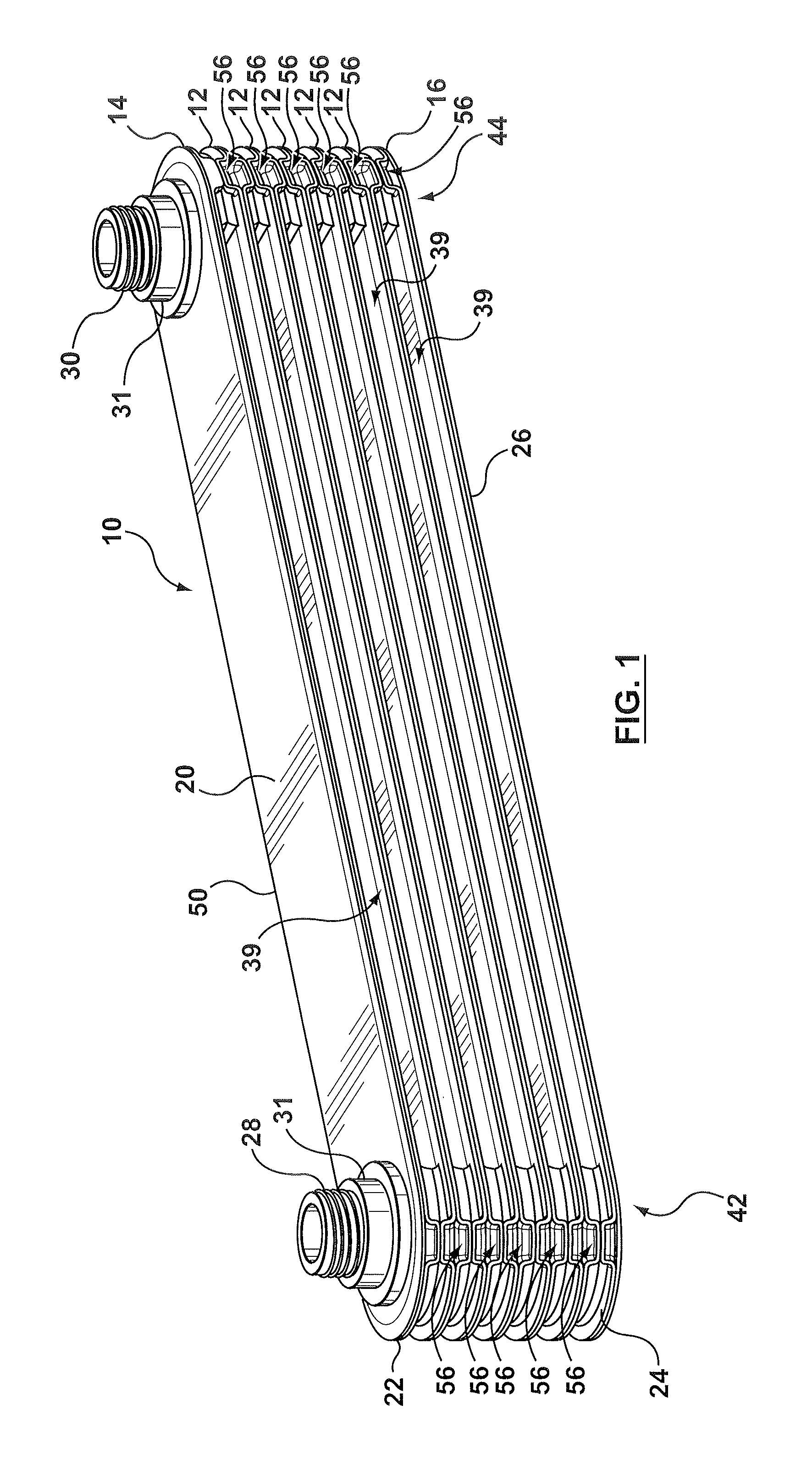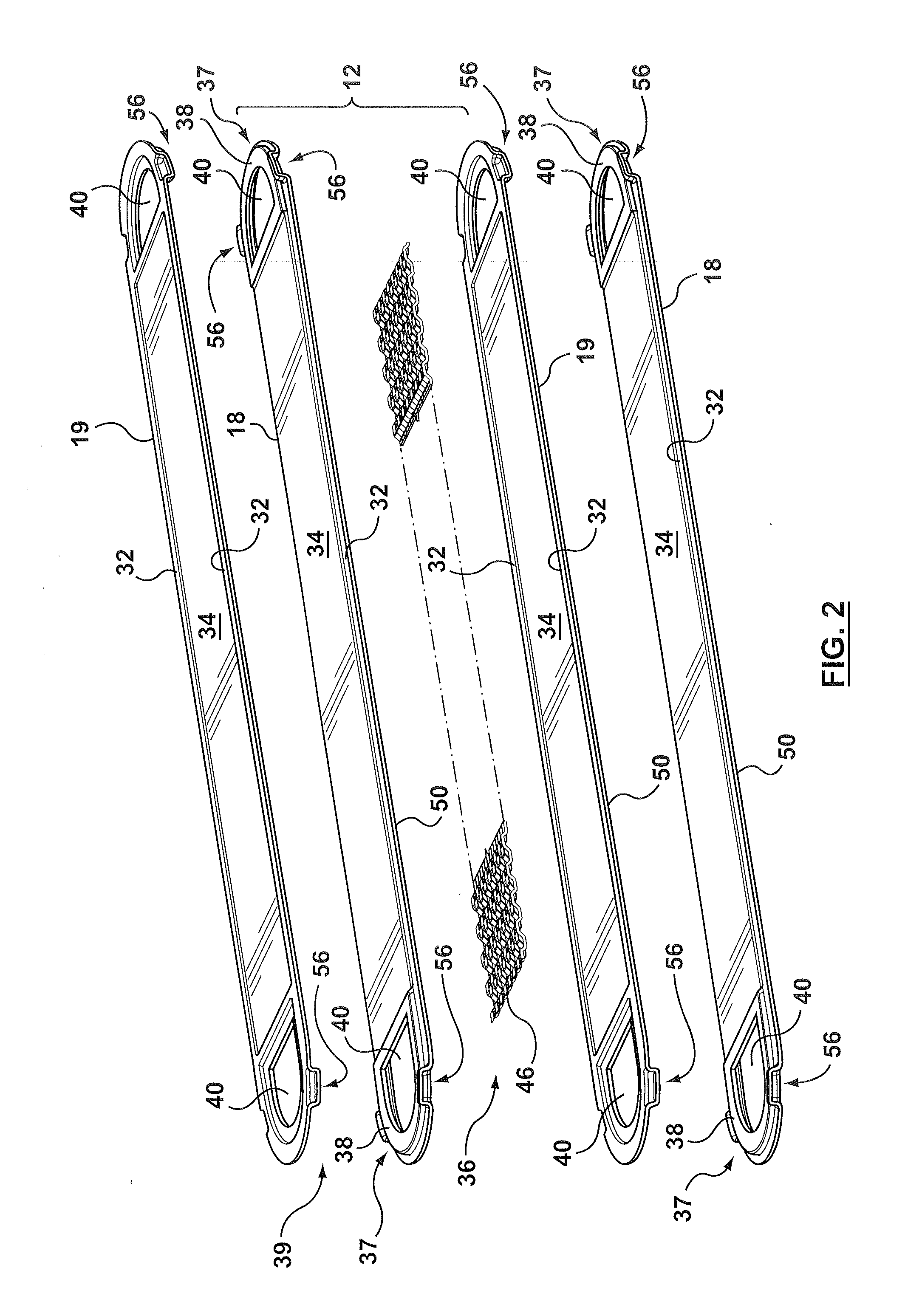Heat exchanger with manifold strengthening protrusion
a technology of manifold and heat exchanger, which is applied in the direction of reinforcing means, stationary conduit assemblies, lighting and heating apparatus, etc., can solve the problems of increasing the overall manufacturing cost of a particular heat exchanger, premature failure or cracking etc., to improve the overall efficiency of the heat exchanger, improve the overall ability of the manifold, and high fluid pressure
- Summary
- Abstract
- Description
- Claims
- Application Information
AI Technical Summary
Benefits of technology
Problems solved by technology
Method used
Image
Examples
Embodiment Construction
[0029]Referring to the drawings, there is shown in FIG. 1 a heat exchanger 10 according to one embodiment of the present invention. Heat exchanger 10 is formed of a plurality of stacked plate pairs 12, a top plate pair 14 and a bottom plate pair 16. Each plate pair 12 is identical and is comprised of first and second plates 18, 19. First and second plates 18, 19 are identical to each other and are arranged in a face-to-face relationship so that the second plate 19 is upside down with respect to the first plate 18. Top plate pair 14 is comprised of a first top plate 20 and a second plate 22 which is the same as one of the second plates 19 that form part of plate pairs 12. Bottom plate pair 16 has a first plate 24 which is the same as the first plate 18 that forms part of the plate pairs 12 and a bottom plate 26. Top plate 20 of the top plate pair 14 is generally a plain, flat plate having opposed openings or ports 31 formed therein for receiving inlet and outlet fittings or nipples 2...
PUM
 Login to View More
Login to View More Abstract
Description
Claims
Application Information
 Login to View More
Login to View More - R&D
- Intellectual Property
- Life Sciences
- Materials
- Tech Scout
- Unparalleled Data Quality
- Higher Quality Content
- 60% Fewer Hallucinations
Browse by: Latest US Patents, China's latest patents, Technical Efficacy Thesaurus, Application Domain, Technology Topic, Popular Technical Reports.
© 2025 PatSnap. All rights reserved.Legal|Privacy policy|Modern Slavery Act Transparency Statement|Sitemap|About US| Contact US: help@patsnap.com



